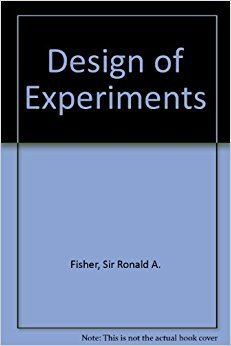Originally published 1935 | ||
 | ||
Preceded by The Genetical Theory of Natural Selection Similar Ronald Fisher books, Other books | ||
The design of experiments
The Design of Experiments is a 1935 book by the English statistician Ronald Fisher about design of experiments and is considered a foundational work in experimental design. Among other contributions, the book introduced the concept of the null hypothesis in the context of the lady tasting tea experiment. A chapter is devoted to the Latin square.
Contents
Chapters
- Introduction
- The principles of experimentation, illustrated by a psycho-physical experiment
- A historical experiment on growth rate
- An agricultural experiment in randomized blocks
- The Latin square
- The factorial design in experimentation
- Confounding
- Special cases of partial confounding
- The increase of precision by concomitant measurements. Statistical Control
- The generalization of null hypotheses. Fiducial probability
- The measurement of amount of information in general
Quotations regarding the null hypothesis
Fisher introduced the null hypothesis by an example, the now famous Lady tasting tea experiment, as a casual wager. She claimed the ability to determine the means of tea preparation by taste. Fisher proposed an experiment and an analysis to test her claim. She was to be offered 8 cups of tea, 4 prepared by each method, for determination. He proposed the null hypothesis that she possessed no such ability, so she was just guessing. With this assumption, the number of correct guesses (the test statistic) formed a binomial distribution. Fisher calculated that her chance of guessing all cups correctly was 1/70. He was provisionally willing to concede her ability (rejecting the null hypothesis) in this case only. Having an example, Fisher commented:
Regarding an alternative non-directional significance test of the Lady tasting tea experiment:
Regarding which test of significance to apply:
On selecting the appropriate experimental measurement and null hypothesis:
